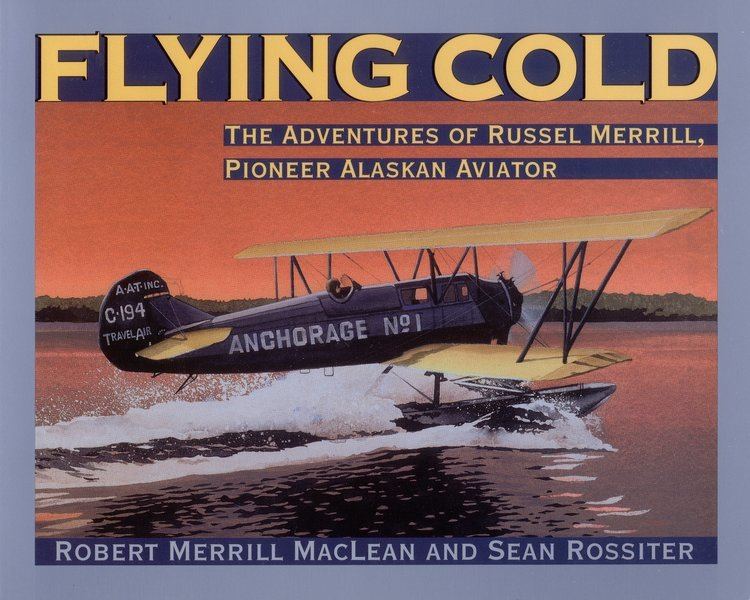Name Russel Merrill Role Aviator | Education Cornell University | |
 | ||
Died September 16, 1929, Cook Inlet, Alaska, United States | ||
Pioneer aviator russel merrill
Russel ("Russ") Hyde Merrill (April 8, 1894 – September 16, 1929) was an Alaskan aviation pioneer.
Contents

Early life
Born in Des Moines, Iowa, he became a U.S. Navy pilot during World War I, becoming Naval Aviator No. 469. After the war, he received a chemistry degree from Cornell University and pursued a career as a civil engineer.
On April 5, 1925, he responded to an advertisement offering a flying boat for sale in Portland, Oregon, where he lived at the time. This started his career as a bush pilot, and on May 26, 1925 he arrived at Ketchikan, Alaska.
Flying in Alaska
Merrill was the first to fly to many cities in Alaska; the first airport in Anchorage was named Merrill Field in his honor. On September 16, 1929, Merrill departed on a flight from Anchorage to the Nyac mine near Bethel, and was never seen again.
Merrill Field, known as the "Aviation Field" until 1930, was Anchorage's first true airport. On Sunday, September 25, 1932, the field was dedicated in memory of Russell Hyde Merrill.
Although Russ Merrill was the second pilot to fly from the "Lower 48" to Alaska, he nevertheless is credited with many firsts. His initial flight was made in a Curtiss F Flying Boat. This was the first flight across the Gulf of Alaska. This was also the first commercial flight westward from Juneau. In November 1927, Merrill became the first pilot to cross the Alaska Range and fly over the remote Kuskokwim River. In an unsuccessful attempt to fly through Rainy Pass, he probed farther south and discovered a second pass. This pass, now known as Merrill Pass, opened a shorter, quicker air route to the lower Kuskokwim area.
Later that same year Merrill received a Signal Corps radio message to fly to Ninilchik and airlift a schoolteacher, near death from a gunshot wound, to Anchorage. Merrill, with his critically wounded passenger, circled and recircled Anchorage at night trying to distinguish the landing field on the park strip. When the citizens realized his plight, they set bonfires around the field and used automobile lights to help indicate the direction. Merrill executed a smooth landing, thus making the first night landing ever in Anchorage.
By 1929, commercial aviation increased rapidly and Merrill flew 10-to-12 hours daily. For his third flight of September 16, 1929, he loaded his plane with heavy machinery destined for Sleetmute and Bethel. That was the last time "Russ" Merrill was ever seen. On October 20, fabric identified as that from the tail section of his plane, was found on a Cook Inlet beach. Some believe he fell asleep and flew into the inlet while others guess he had been forced down on the inlet and cut the fabric to use as a sail before the plane was swamped and sunk in a gale the next night.
